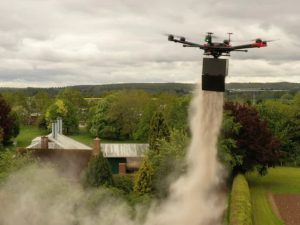How Environmentally Friendly Are Drones for Scattering Ashes?
As technology evolves, drones are increasingly being used for ashes scattering services. These unmanned aerial vehicles offer a peaceful and memorable way to honour loved ones, but an important question remains: are drones environmentally friendly for this purpose? In this article, we explore the environmental impact of drones in ashes scattering, backed by research and expert opinions.
Understanding the Environmental Impact of Drones
Drones are becoming more popular in industries like delivery, filmmaking, and memorial services. Their environmental impact, however, is still under scrutiny. When considering the use of drones for scattering ashes, key factors such as carbon emissions, energy use, and ecological disruption must be examined.
Carbon Emissions and Drones
One of the primary concerns about drone use is their carbon footprint. Fortunately, drones are typically powered by lithium-ion batteries, which are much cleaner than fossil fuels. According to research by the University of Southern Denmark, drones produce up to 95% fewer carbon emissions per kilometre than conventional vehicles like vans or trucks (Jensen & Pedersen, 2020).
In the context of ashes scattering, where flights are often short, the carbon emissions are minimal compared to traditional methods of travel. For instance, driving long distances to remote scattering locations in a car produces significantly more emissions than a brief drone flight.
Energy Efficiency of Drone Technology
Another factor in determining how environmentally friendly drones are is their energy consumption. Drones used for ashes scattering services are generally small and lightweight, powered by rechargeable batteries. Studies from the International Energy Agency (IEA) indicate that drones consume up to 90% less energy compared to helicopters or light aircraft performing similar tasks (IEA, 2019).
This makes drones an energy-efficient option for scattering ashes, especially in remote or hard-to-reach locations where ground transport may not be practical. The relatively low energy requirements of drones help reduce their overall environmental impact.
Minimising Ecological Disruption
One of the lesser-known advantages of drones is their ability to reach locations without causing significant ecological disruption. Traditional methods of ashes scattering may involve boats or vehicles that can disturb natural environments. In contrast, drones can access remote areas with minimal interference.
However, concerns have been raised regarding the noise impact of drones on wildlife. While drones can produce some noise, it is significantly quieter than that produced by helicopters or boats. According to the European Aviation Safety Agency, the noise impact of drones is much lower, making them a more eco-friendly option for ashes scattering in nature (EASA, 2021).
Moreover, drones used for ashes scattering typically fly at low altitudes, minimising disruption to birdlife and ecosystems. Experienced drone operators adhere to strict regulations to avoid sensitive wildlife areas, ensuring a respectful and eco-conscious scattering process.
Ashes Scattering Ideas Using Drones
Drones not only offer an environmentally friendly option but also open up unique and meaningful ashes scattering ideas. For example, drones can release biodegradable urns or scatter ashes in remote areas like mountain ranges, forests, or over the ocean. These options create special and memorable moments for families while reducing the ecological impact of human intervention in these environments.
Additionally, drones can capture stunning aerial footage of the scattering ceremony, allowing families to create lasting memories of the event.
Conclusion: Drones as an Eco-Friendly Ashes Scattering Service
Drones are proving to be an environmentally friendly alternative for ashes scattering services. Their lower carbon emissions, high energy efficiency, and minimal disruption to natural ecosystems make them a responsible choice for those seeking a sustainable way to honour a loved one’s memory. By choosing drones for ashes scattering, families can celebrate life while also protecting the environment.
Find out more at Aerial Ashes
Follow us on Facebook
On Instagram
On YouTube
Or join our Facebook group: Inspiration for Ashes Scattering
Sources:
- Jensen, P., & Pedersen, T. (2020). Drone delivery reduces CO2 emissions by up to 95%. University of Southern Denmark.
- International Energy Agency. (2019). Energy efficiency of electric drones.
- European Aviation Safety Agency. (2021). Noise impact of drones on the environment.


